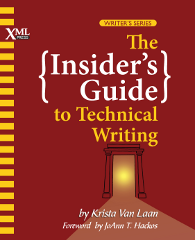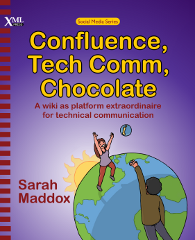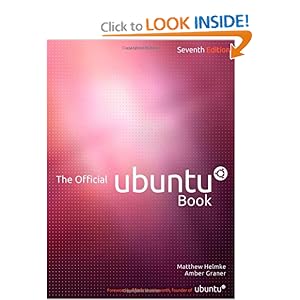EDIT: Read this, then check out my added review of the 2nd Edition, ten years later.
I love technical writing. Sincerely. When I say that to most people, they look at me oddly, squint a little, maybe cock their head sideways, and walk away. I think that is because most people don’t really understand what this job entails. To be sure, most people realize that technical writers are the ones who write those manuals that come with their favorite electronic toys and mechanical gadgets. We get credit for making sure mechanics have quality, accurate information before they lay a wrench on your car or adjust the hydraulic systems on the airplane you flew in to visit your grandmother. What most people don’t realize is that this process is actually a lot of fun. This book communicates that beautifully.

The Insider’s Guide to Technical Writing came out earlier in 2012. It was published by XML Press, which specializes on content for technical communicators (also known as technical writers, technical documentation specialists, and so on). The author, Krista Van Laan, has the experience to be credible and authoritative. She also proves her mettle with her clear writing and thorough coverage of the field.
As I read the book, I played a game. You see, I am also an experienced technical writer, and I have read some books on the topic that I would not recommend at all. My game consisted of trying to find the holes in the book. I watched carefully for the missed aspects of the job or the incomplete descriptions of a task. I scrutinized the text to see if I could find the sort of poor writing style or uninteresting examples that plague some parts of our field–ever read a manual and thought to yourself that you could write a better one? So have I. So has Van Laan, and she uses this example as one reason why you might be a good candidate to become a technical writer.
My game was an utter failure. The book is a resounding success. Everything I love is in here. Everything I do (including those bits I don’t love quite so much) is in here. The book is not only written clearly, but with a style that is enjoyable to read. Examples are interesting and ring true to life. If you have ever wondered whether you might want to become a technical writer, wondered what a technical writer does, or you are a technical writer who knows there are gaps in your knowledge, buy and read this book.
The Insider’s Guide to Technical Writing covers all the bases. It begins with a high-level description of what a technical writer does and how to determine whether or not you have the right stuff to be a success. This is not a discouraging section, but rather a deeply encouraging one that highlights the personality and intellectual traits necessary to learn and enjoy using the skills that a technical writer needs. It covers how to pursue the career and how to get a job in the field. Then, we get to the really fun parts.
I’m convinced that technical writing is about 15% writing. The rest of my time is spent doing research, being one of the very first people to test a product or an application, interviewing subject matter experts, learning about my audience, planning and coordinating my activities so that I can deliver the requested materials on time, presenting drafts for technical review, and accepting and incorporating correction and feedback from others who also want us to deliver excellent and accurate documentation. When I’m not doing these things, I might be organizing or reorganizing information, playing around with how it is expressed, working on a style guide to ensure that everything is consistent in its look and feel, or learning about design or a new technology for delivering documentation. Good writing skills are vital, but technical writers also need good organizational skills, interpersonal communication skills, the ability to learn new technologies quickly and completely, and adaptability.
Everything in the previous paragraph is in the book. In fact, that paragraph only scratches the surface of the book’s content. You will also learn about managing your career, working remotely, translation and localization, how to keep your writer’s skills and toolkit up to date, and constantly growing.
Seriously, if any of this sounds interesting to you, buy this book and read it.
Disclosure: I was given my copy of this book by the publisher as a review copy.




